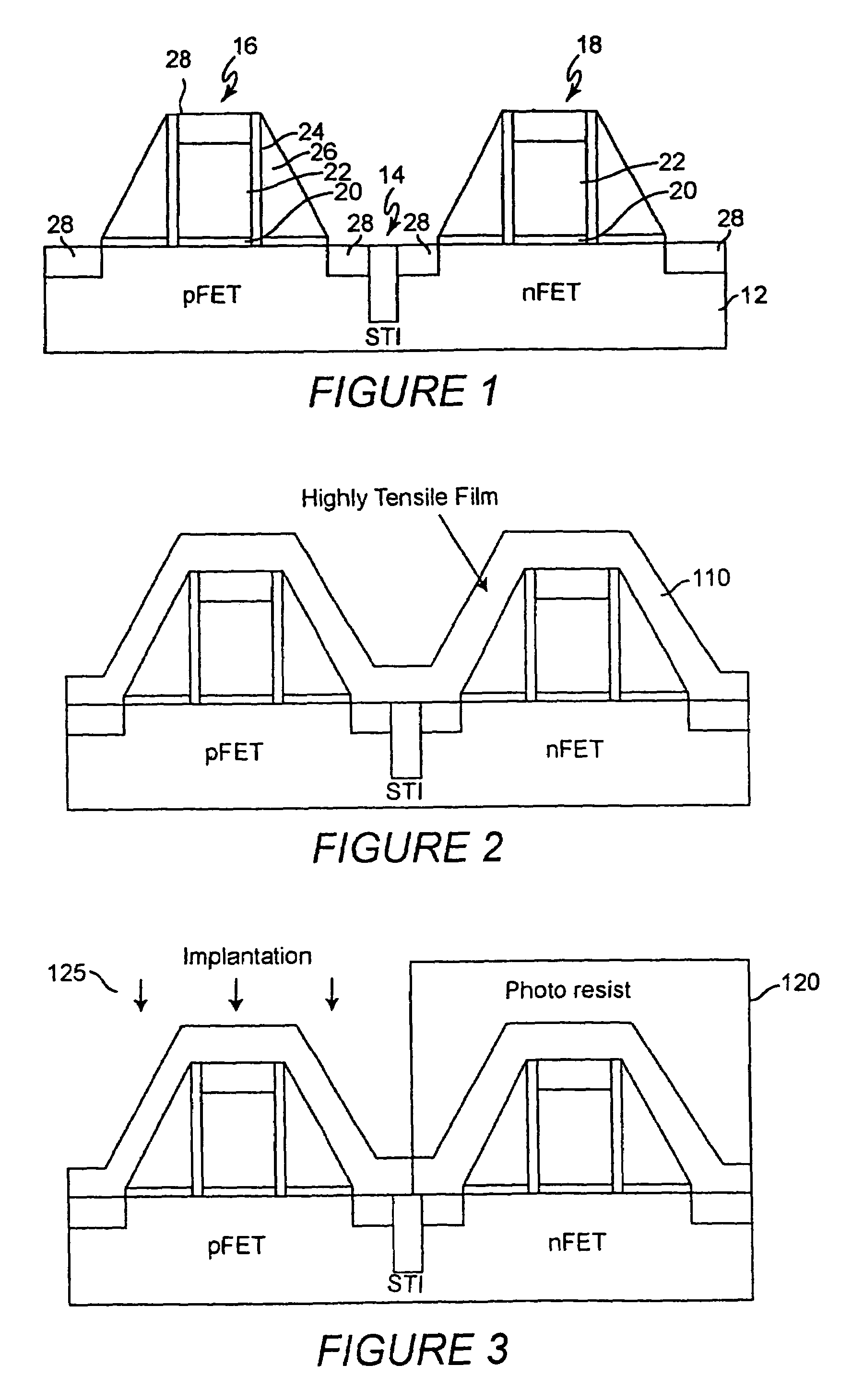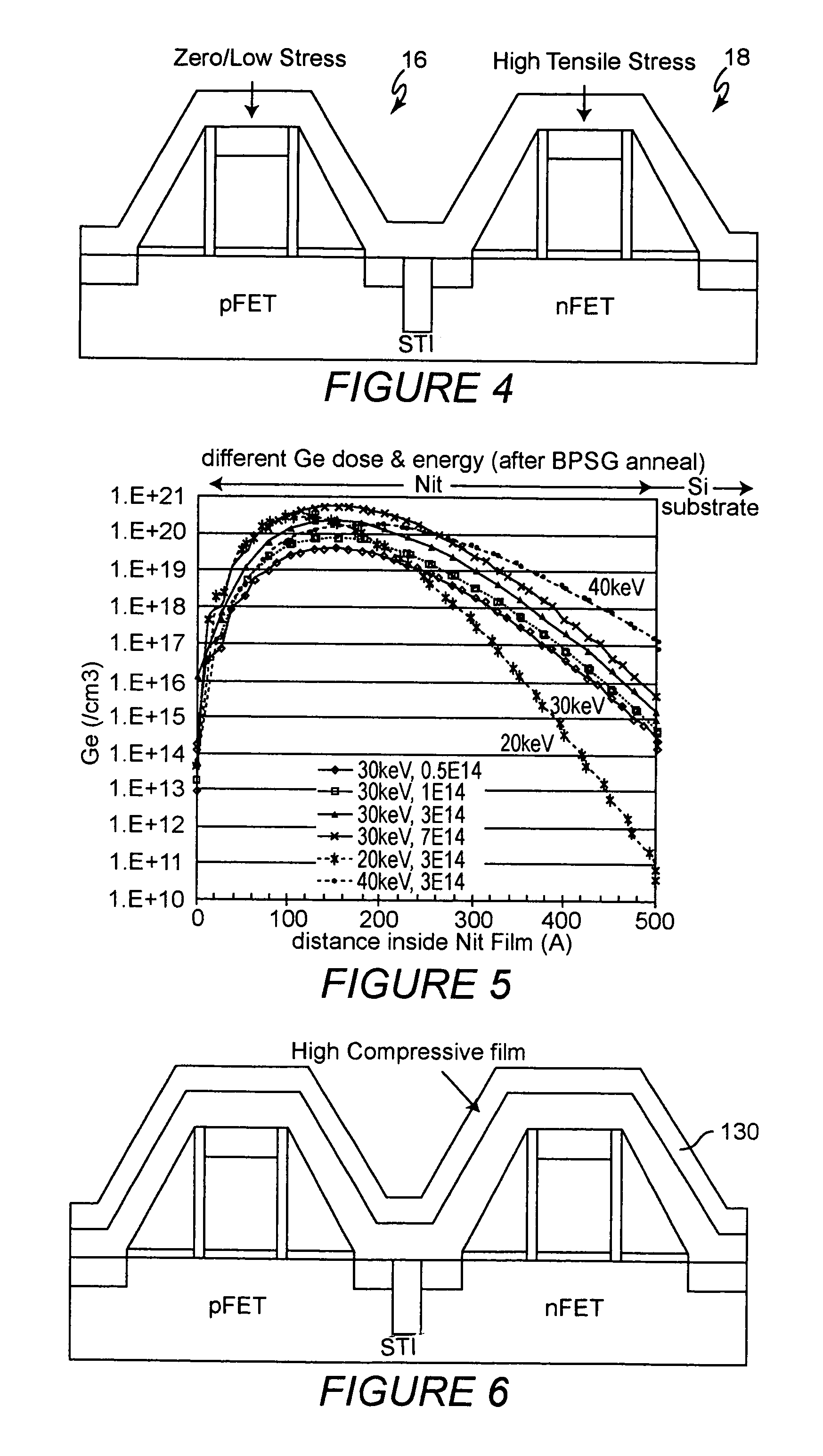Increasing carrier mobility in NFET and PFET transistors on a common wafer
a technology of pfet transistor and common wafer, which is applied in the direction of transistors, electrical devices, semiconductor devices, etc., can solve the problems of signal propagation time and susceptibility, the length of propagation paths, and the cost of devices containing chips
- Summary
- Abstract
- Description
- Claims
- Application Information
AI Technical Summary
Benefits of technology
Problems solved by technology
Method used
Image
Examples
Embodiment Construction
[0023]Referring now to the drawings, and more particularly to FIG. 1, there is shown, in cross-section, an exemplary pair of complementary NMOS and PMOS transistors such as might comprise a CMOS pair in a portion of an integrated circuit. These transistors have been completed through the formation of silicide on the source, drain and gate regions to reduce resistance of contacts to be later applied thereto. The method of formation of these transistors and the particulars of their structures are unimportant to an understanding of the invention or its successful practice. It should be understood that while FIG. 1 illustrates transistors prior to the application of the invention thereto, the illustration is intended to be highly schematic for clarity and no portion of FIG. 1 is admitted to be prior art as to the invention.
[0024]In FIG. 1 and other Figures, the transistors 16, 18 are formed on substrate 12 (which may be relatively much thicker than depicted since the transistors are pos...
PUM
 Login to View More
Login to View More Abstract
Description
Claims
Application Information
 Login to View More
Login to View More - R&D
- Intellectual Property
- Life Sciences
- Materials
- Tech Scout
- Unparalleled Data Quality
- Higher Quality Content
- 60% Fewer Hallucinations
Browse by: Latest US Patents, China's latest patents, Technical Efficacy Thesaurus, Application Domain, Technology Topic, Popular Technical Reports.
© 2025 PatSnap. All rights reserved.Legal|Privacy policy|Modern Slavery Act Transparency Statement|Sitemap|About US| Contact US: help@patsnap.com



